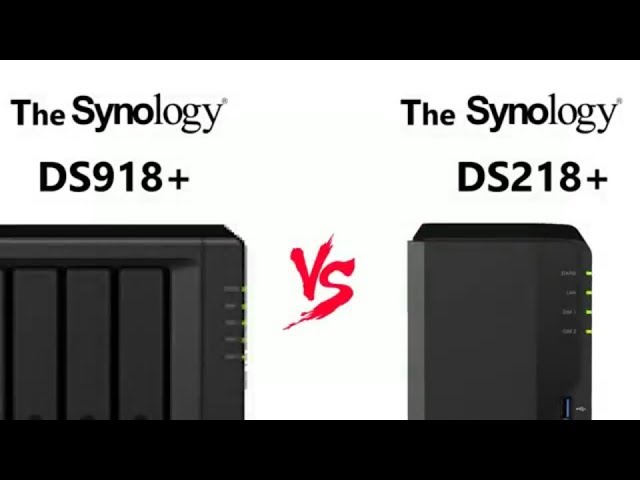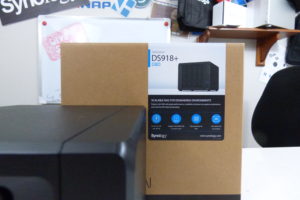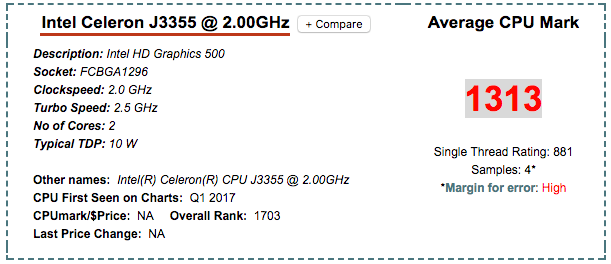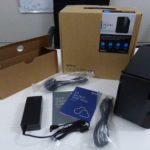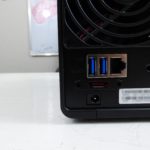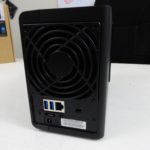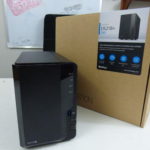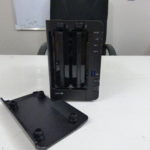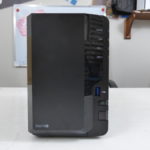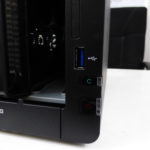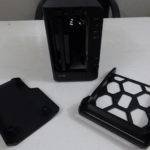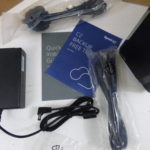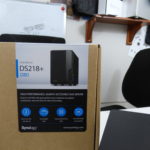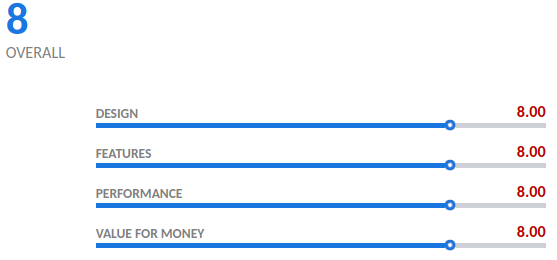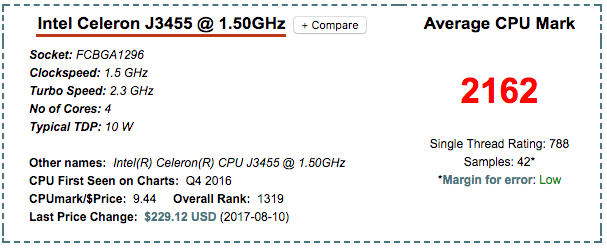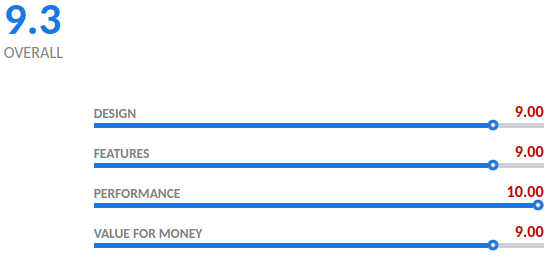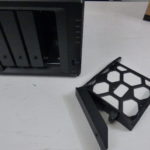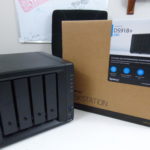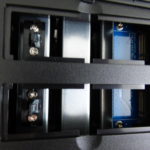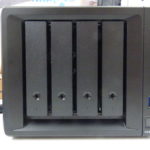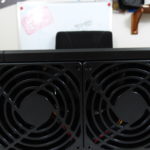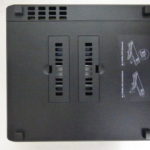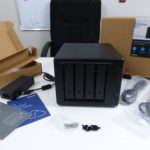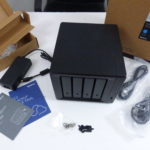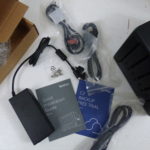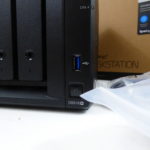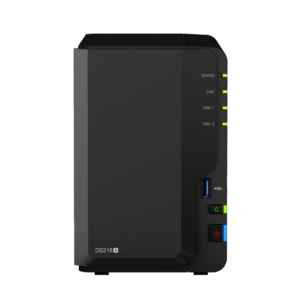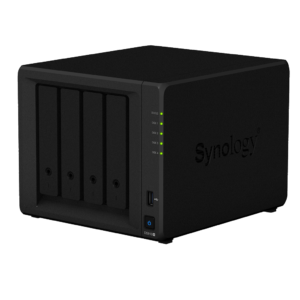Choosing the Right 4K Fully Featured NAS – DS218+ Vs DS918+?
Back in September and October of 2017, Synology NAS (currently regarded as the top NAS brand at the moment for the home desktop, SMB users and more) decided to release almost their entire desktop diskstation NAS series at once. Understandable this caused a great deal of confusion for many NAS buyers as suddenly they were no longer choosing between two or three devices, but now over ten to twenty (if you factored in the older releases too). I still don’t think this was a fantastically smart idea and only time will tell if this gamble paid off for them, but after the dust settled, two particular Synology NAS devices were more popular than all the others – the Synology DS918+ 4-Bay and the Synology DS218+ 2-Bay. Somehow these two NAS servers had really appealed to NAS shoppers because all the other NAS devices released were either too expensive for the hardware, or too lacking in hardware too start with to provide the performance NAS users needed. However, despite the big margin of price and hardware difference between them, most users choose either the DS218+ for its great Price VS hardware or the DS918+ for its supreme power, performance, long-term use and expandability. But today we want to figure out which NAS device is right for you.
The DS918+ NAS and DS218+ NAS? What can both do?
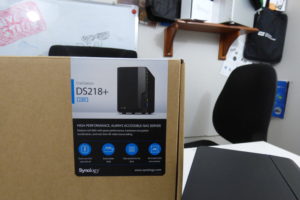
Despite their differences, there are a number of things both the Synology DS918+ and DS218+ NAS can do. With around £200 price difference between them, if you need your NAS to only do one or two of the things below then congratulations, you may well save yourself a lot of money! Take a look:
- Both units feature Intel x86 CPUs and plastic compact chassis, thereby reducing power consumption, noise and heat generated
- Stream and transcode on the fly (so, live) 1080p HD or 4K media – though performance in greater on the DS918+ and it can also transcode dual streams of 4K too.
- Both units are DLNA certified so can be accessed, browsed and played from by popular DLNA devices, such as Amazon Firestick, Chromecast, Apple TV, Bose, Sonos, iPads, etc
- Both are multi-bay, RAID enabled devices NAS devices that support JBOD, RAID 0, RAID 1 and SHR, as well as supporting the very latest SATA based 10TB and 12TB NAS Hard Drives from brands like WD, Seagate and HGST. However, the DS918+ also supports RAID 5, RAID 6 and RAID 10
- Both devices run on the DSM 6.1 (6.2 in beta) software that arrives free on the device – lots of apps, access, functionality and intuitively designed software at your fingertips
- Both use and can be accessed equally by a multitude of mobile applications such as DS File, DS Video, DS Photo and DS Music available on iOS and Android
- Both units support use as a surveillance station (with the FREE Synology surveillance software – Review here), arriving with two camera licences and providing live access to at least x20 IP Cameras via the DS218+ NAS and upto 40x IP Cameras on the DS918+
- Both units are completely compatible with Windows, Android and Mac systems, as well as acting as a bring between software platforms to share and distribute files
- Both can be used as a comprehensive iTunes server
- Both units can be used as mail and business servers, providing excellent CRM and CMS systems
- Both units can be used as download stations, allowing you to set up tasks and schedules for downloading files and in popular formats such as BT, NZB, HTTP, FTP and more
What are the Pros and Cons of the Synology DS218+?
DESIGN – I absolutely love this new chassis. Robbie on our YouTube channel, when asked to compare it with the DS216+ case, described it as comparing the new Robocop movie with the older one. Much more modern shape and design, a good mix of sharp edges with all the curves in the right places
FEATURES – On a hardware level, you are going to be hard pushed to find a better 2 bay in this price range. Only the Synology DS718+ gives you better hardware options, but at a price of just £280+ without VAT, this is hard to beat
PERFORMANCE – Featuring a great J series CPU from intel in Dual Core and 2GB of memory, this unit can perform all of the very latest applications from synology in DSM 6.2
VALUE – Synology has really turned a corner on their NAS series with this upgrade to the DS218+ flagship home two bay NAS. This is a worthy successor to the DS216+II and highly recommended.
DESIGN – Still features that odd removable front panel, instead of lockable trays.
FEATURES – Just one LAN port mans that link aggregation is not supported
PERFORMANCE – That dual core CPU, though an x86 chip that is highly suitable as a plex media server, is just a little underwhelming for creating even a single standalone VM use.
VALUE – If you reduce the size of your hard drives for this NAS by even 1TB each, you can afford the more powerful DS718+
What is the Synology DS918+ Diskstation NAS and Why should you buy it?
Released in mid-September 2017, the Synology DS918+ NAS is widely regarded as one of the most game-changing devices Synology has released yet. Featuring pretty impressive hardware specs inside:
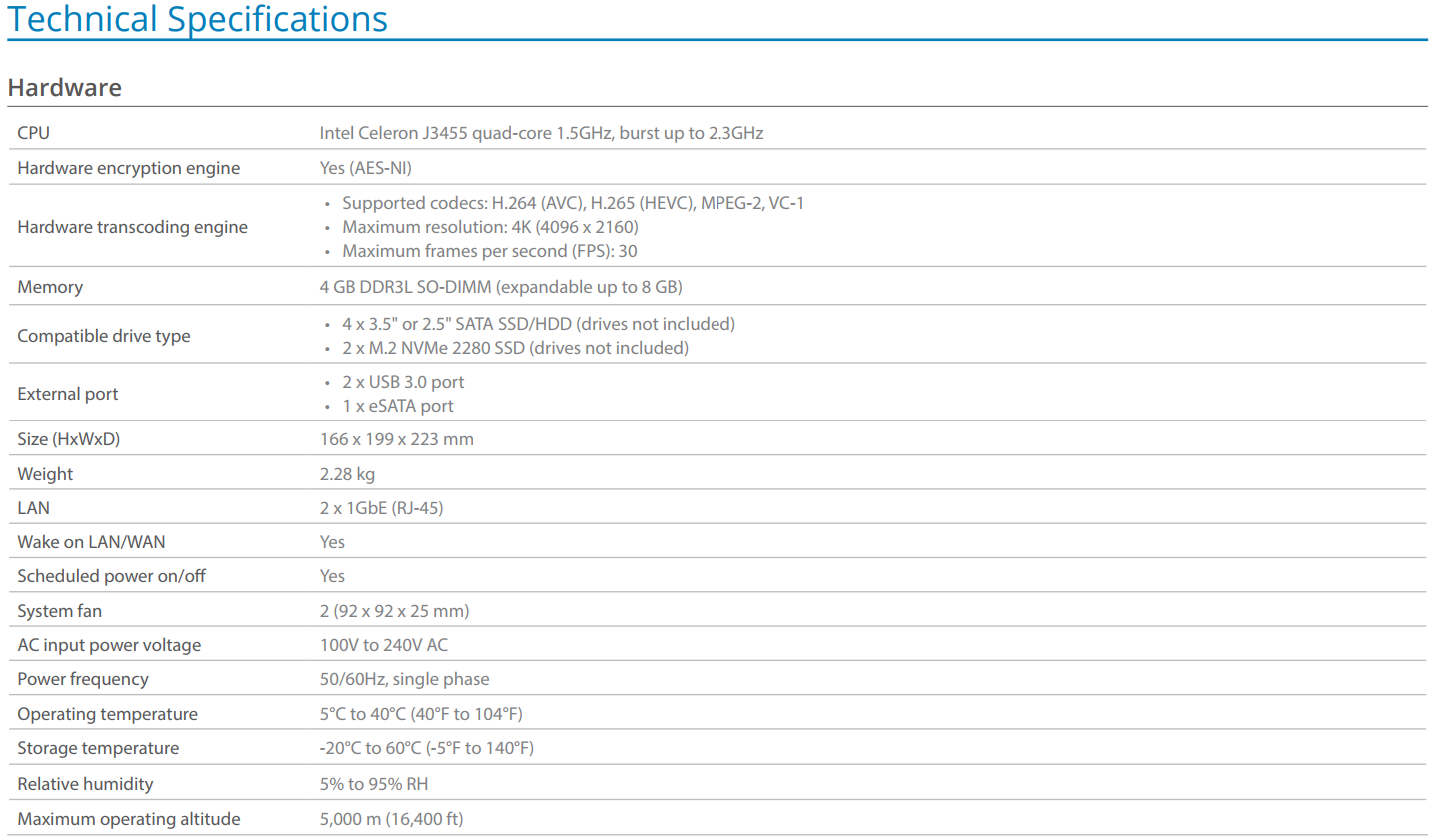
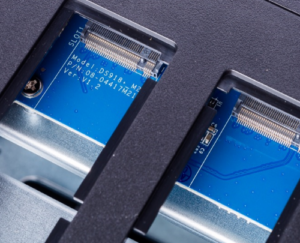 However, the real game-changing part of the DS918+ is that newly included NVMe SSD Cache port. This is a completely new idea in desktop NAS and although it has been included as an optional PCIe card by other vendors, Synology is the first to include it as a default part of the hardware. By installing 1 or 2 M2 SSDs in the blots at the base of the unit, you can VASTLY improve your read-write speeds and internal operations that are resource hungry or require much higher iOPs. Things like mass thumbnail generation, Virtual machines, mass backups and pretty much anything that taxes the CPU on a given day.
However, the real game-changing part of the DS918+ is that newly included NVMe SSD Cache port. This is a completely new idea in desktop NAS and although it has been included as an optional PCIe card by other vendors, Synology is the first to include it as a default part of the hardware. By installing 1 or 2 M2 SSDs in the blots at the base of the unit, you can VASTLY improve your read-write speeds and internal operations that are resource hungry or require much higher iOPs. Things like mass thumbnail generation, Virtual machines, mass backups and pretty much anything that taxes the CPU on a given day.
This feature alone almost completely justifies the extra £100 spend. However given the 4GB of DDR3L over the 2GB that the DS718+ arrives with, as well as the 2 extra Hard Drive bays (which you do not need to fully populate from day one – either of these devices can run on a single HDD if needed), for me going for the DS918+ is a no-brainer and wins.
What are the PROs and CONs of the DS918+?
So, what are the advantages and disadvantages of the DS918+:
DESIGN – With a newly created chassis released with improved ventilation, but still managing to keep compact (even introducing new hardware inside) this is by FAR the best Synology design yet. A welcome improvement to the old DS916+ chassis.
FEATURES – The Synology DS918+ NAS will do it all. If you need a NAS to watch and transcode 4K, Run several VMs, Apple time machine backups, host a plex media server, run an iTunes server, run a business from, run surveillance cameras over the network, provide a CRM and CMS system, as well as host several websites – The DS918+ is the NAS server for you
PERFORMANCE – Easily one of the best performing Synology NAS devices available for home and small business users. Also if the default hardware isn’t enough, this is the easiest to upgrade, featuring RAM upgrades and NVMe slots
VALUE – This could possibly be the best NAS of the year. We still have a couple of months before we can truly decide, but for this price and the HUGE amount of software and hardware option in the price, threshold makes it irresistible.
DESIGN – The two rear fans, though fully controllable, cannot be completely switched off and this may annoy some people. However, any noise they make on their lowest setting is still lower than the HDD you have installed.
FEATURES – Although it can do many of these tasks at once, if you need to do ALL of them at once, you will need a solid Intel Xeon at the least.
PERFORMANCE – The Only fault I can find is that there is no 8GB Default version available to buy, as you found with the DS918+ (8GB).
VALUE – It is a shame that there is no 8-Bay option with this hardware – as the DS1817+ is rather disappointing by Comparison
Should you buy the Synology DS218+ or DS918+ NAS – Conclusion
As hard as it is to decide between the Synology DS918+ NAS and DS218+ NAS in terms of money/cost, you really have to try to remove this as a factor when deciding between them. Whichever Network attached storage device you buy, you are going to want to make the most of it and justify the purchase for today and for the years that it will be working in your home and business life. That is the key difference between these devices. The Synology DS218+ provides an excellent performance on most common NAS tasks and applications and will suit those looking fora NAS for both them, their family and light business use for up to and above 3 years. The Synology DS918+ provides you all the same functionality of the 2-Bay, but in much, much more quantities. As well as supporting many business class applications and hardware advantages such as Virtual Machine use, expandability with the DX517, a longer warranty and the performance upgrade of dual NVMe SSD slots now or at a later date. The DS918+ is the NAS solution for those that want a 5+ year NAS solution for their home and/or business life.
Where to buy the Synology DS918+ or DS218+ NAS?
Both these two amazing NAS devices are available to buy at Amazon and can found below along with how the Synology DS218+ and DS918+ specifications compare:
| Model | Synology
DS218+ |
Synology
DS918+ |
| Price | ||
| CPU Model | Intel Celeron J3355 | Intel Celeron J3455 |
| CPU Architecture | 64-bit | 64-bit |
| CPU Frequency | Dual Core 2.0 burst up to 2.5 GHz | Quad Core 1.5 burst up to 2.3 GHz |
| Hardware Encryption Engine (AES-NI) | YES | YES |
| Hardware Transcoding Engine | H.264 (AVC), H.265 (HEVC), MPEG-2 and VC-1; maximum resolution: 4K (4096 x 2160); maximum frame rate per second (FPS): 30 | H.264 (AVC), H.265 (HEVC), MPEG-2 and VC-1; maximum resolution: 4K (4096 x 2160); maximum frame rate per second (FPS): 30 |
| Memory | ||
| System Memory | 2 GB DDR3L | 4 GB DDR3L |
| Memory Module Pre-installed | 2GB (1 x 2GB) | 4GB (1 x 4GB) |
| Total Memory Slots | 2 | 2 |
| Memory Expandable up to | 6 GB (2 GB + 4 GB) | 8 GB (4 GB x 2) |
| Storage | ||
| Drive Bays | 2 | 4 |
| Maximum Drive Bays with Expansion Unit | 9 | |
| M.2 Drive Slots | 2 | |
| Compatible Drive Type* (See all supported drives) |
|
|
| Maximum Internal Raw Capacity | 24 TB (12 TB drive x 2) (Capacity may vary by RAID types) | 48 TB (12 TB drive x 4) (Capacity may vary by RAID types) |
| Maximum Raw Capacity with Expansion Units | 108 TB (12 TB drive x 9) (Capacity may vary by RAID types) | |
| External Ports | ||
| RJ-45 1GbE LAN Port | 1 | 2 (with Link Aggregation / Failover support) |
| USB 3.0 Port | 3 | 2 |
| eSATA Port | 1 | 1 |
| USBCopy | YES | |
| File System | ||
| Internal Drives |
|
|
| External Drives |
|
|
| Appearance | ||
| Size (Height x Width x Depth) | 165 mm x 108 mm x 232.2 mm | 166 mm x 199 mm x 223 mm |
| Weight | 1.30 kg | 2.28 kg |
| Others | ||
| System Fan | 92 mm x 92 mm x 1 pcs | 92 mm x 92 mm x 2 pcs |
| Fan Speed Mode |
|
|
| Brightness adjustable front LED indicators | YES | YES |
| Power Recovery | YES | YES |
| Noise Level* | 19.3 dB(A) | 19.8 dB(A) |
| Scheduled Power On/Off | YES | YES |
| Wake on LAN/WAN | YES | YES |
| Power Supply Unit / Adapter | 60W | 100W |
| Power Consumption* | 17.23 W (Access) 5.4 W (HDD Hibernation) |
28.8 W (Access) 12.6 W (HDD Hibernation) |
| Warranty | 2 Years | 3 Years |
| Storage Management | ||
| Maximum Internal Volume Number | 256 | 512 |
| Supported RAID Type |
|
|
| SSD Support | ||
| SSD Read/Write Cache (White Paper) | YES | |
| SSD TRIM | YES | YES |
| File Sharing Capacity | ||
| Maximum Shared Folder | 256 | 512 |
| Maximum Shared Folder Sync Tasks | 4 | 8 |
| Maximum Concurrent CIFS/AFP/FTP Connections | 500 | 1000 |
| Syslog Events per Second | 400 | 800 |
| Virtualization | ||
| VMware vSphere 6 with VAAI | YES | |
| Windows Server 2012 | YES | |
| Windows Server 2012 R2 | YES | |
| Citrix Ready | YES | |
| OpenStack | YES | |
| Antivirus by McAfee (Trial) | YES | YES |
| Central Management System | YES | YES |
| Chat | YES | YES |
| Maximum Users | 1000 | 1500 |
| Cloud Station Server | ||
| Maximum Number of Concurrently Connected Devices | 500 | 1000 |
| Maximum Number of Concurrently Connected Devices (with RAM expansion) | 1500 | 2000 |
| Media Server | ||
| DLNA Compliance | YES | YES |
| Office | ||
| Maximum Users | 200 | 200 |
| Maximum Simultaneous Editing Users | 60 | 80 |
| Surveillance Station | ||
| Maximum IP cam (Licenses required) | 25 (including 2 Free License) (See All Supported IP Cameras) | 40 (including 2 Free License) (See All Supported IP Cameras) |
| Total FPS (H.264)* | 750 FPS @ 720p (1280×720) 600 FPS @ 1080p (1920×1080) 350 FPS @ 3M (2048×1536) 250 FPS @ 5M (2591×1944) 120 FPS @ 4K (3840×2160) |
1200 FPS @ 720p (1280×720) 840 FPS @ 1080p (1920×1080) 550 FPS @ 3M (2048×1536) 300 FPS @ 5M (2591×1944) 180 FPS @ 4K (3840×2160) |
| Total FPS (H.265)* | 750 FPS @ 720p (1280×720) 750 FPS @ 1080p (1920×1080) 450 FPS @ 3M (2048×1536) 250 FPS @ 5M (2591×1944) 200 FPS @ 4K (3840×2160) |
1200 FPS @ 720p (1280×720) 1200 FPS @ 1080p (1920×1080) 900 FPS @ 3M (2048×1536) 550 FPS @ 5M (2591×1944) 300 FPS @ 4K (3840×2160) |
| Total FPS (MJPEG)* | 450 FPS @ 720p (1280×720) 250 FPS @ 1080p (1920×1080) 160 FPS @ 3M (2048×1536) 130 FPS @ 5M (2591×1944) |
720 FPS @ 720p (1280×720) 500 FPS @ 1080p (1920×1080) 330 FPS @ 3M (2048×1536) 200 FPS @ 5M (2591×1944) |
| Video Station | ||
| Maximum Transcoding Channel Number |
|
|
| VPN Server | ||
| Maximum Connections | 20 | 20 |
Need Help?
Where possible (and where appropriate) please provide as much information about your requirements, as then I can arrange the best answer and solution to your needs. Do not worry about your e-mail address being required, it will NOT be used in a mailing list and will NOT be used in any way other than to respond to your enquiry.
📧 SUBSCRIBE TO OUR NEWSLETTER 🔔
🔒 Join Inner Circle
Get an alert every time something gets added to this specific article!
This description contains links to Amazon. These links will take you to some of the products mentioned in today's content. As an Amazon Associate, I earn from qualifying purchases. Visit the NASCompares Deal Finder to find the best place to buy this device in your region, based on Service, Support and Reputation - Just Search for your NAS Drive in the Box Below
Need Advice on Data Storage from an Expert?
Finally, for free advice about your setup, just leave a message in the comments below here at NASCompares.com and we will get back to you. Need Help?
Where possible (and where appropriate) please provide as much information about your requirements, as then I can arrange the best answer and solution to your needs. Do not worry about your e-mail address being required, it will NOT be used in a mailing list and will NOT be used in any way other than to respond to your enquiry.
Need Help?
Where possible (and where appropriate) please provide as much information about your requirements, as then I can arrange the best answer and solution to your needs. Do not worry about your e-mail address being required, it will NOT be used in a mailing list and will NOT be used in any way other than to respond to your enquiry.

|
 |
A Buyer's Guide to Travel Routers - GET IT RIGHT, FIRST TIME
Jonsbo N6 DIY NAS Case Review
The Best Bits (and Worst Bits) of NAS of 2025!
Minisforum MS-02 Ultra Review
Minisforum N5 NAS, 6 Months Later - Better, Worse, the Same?
Beelink ME Pro NAS Revealed
Access content via Patreon or KO-FI
Discover more from NAS Compares
Subscribe to get the latest posts sent to your email.


